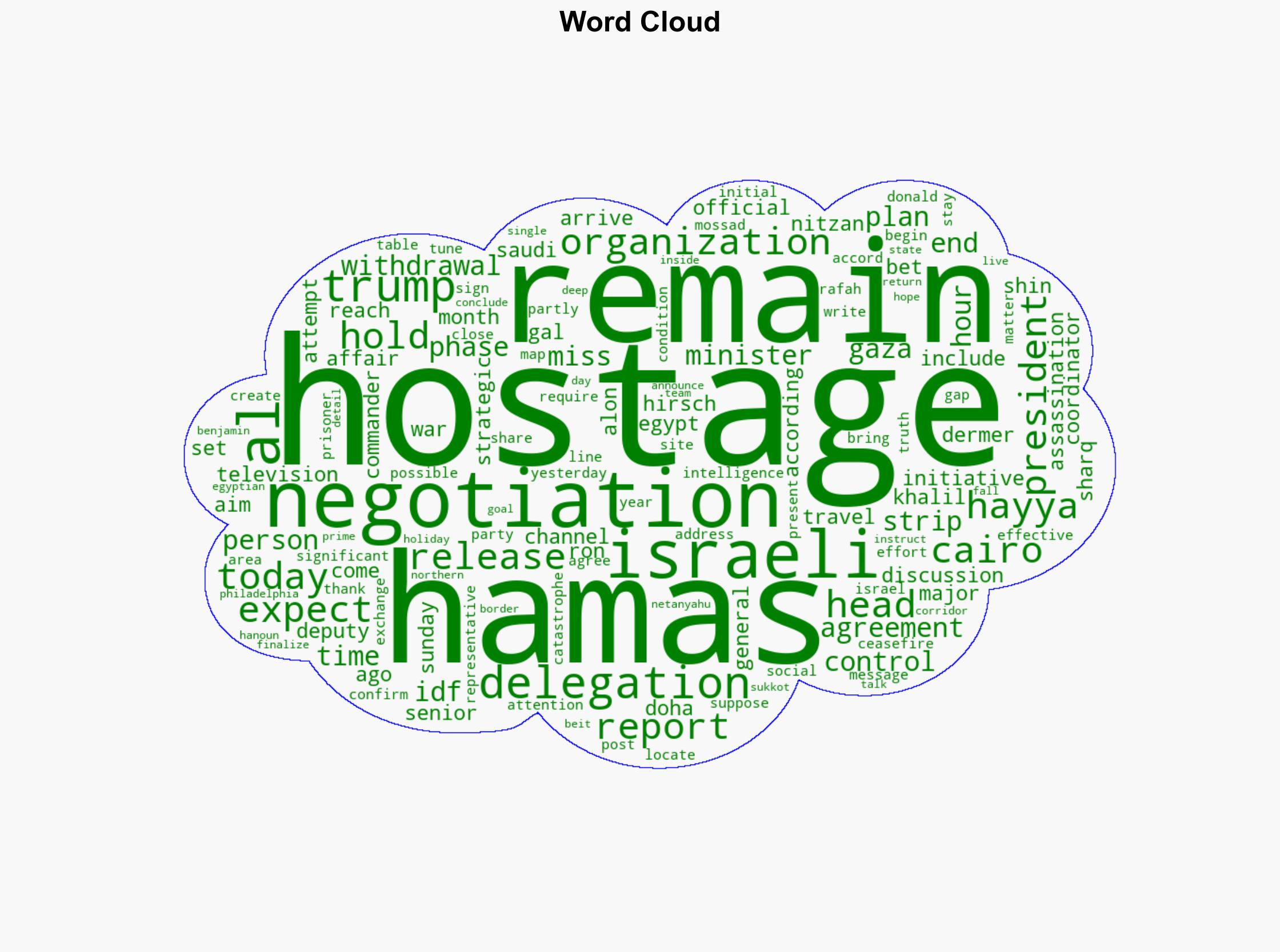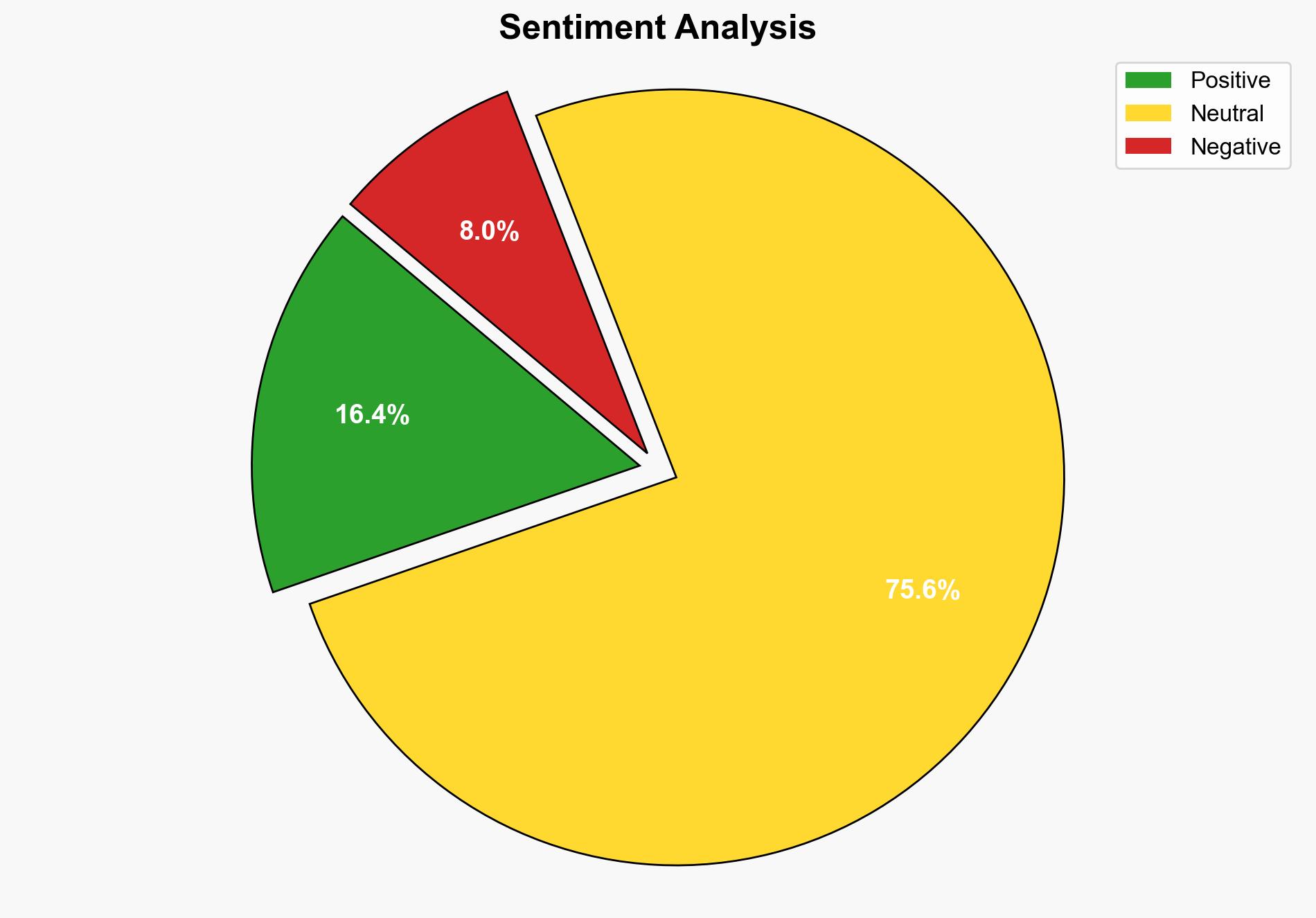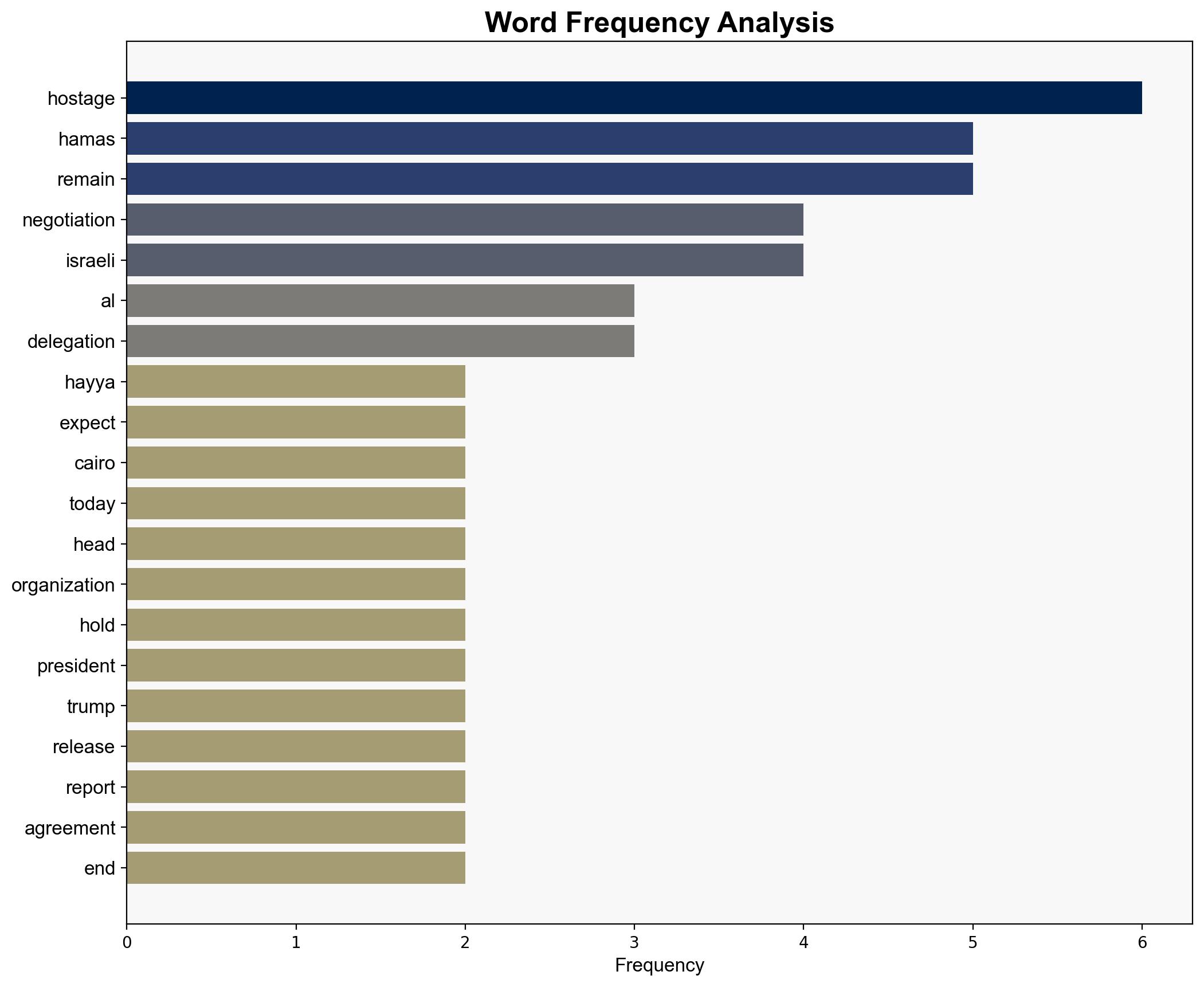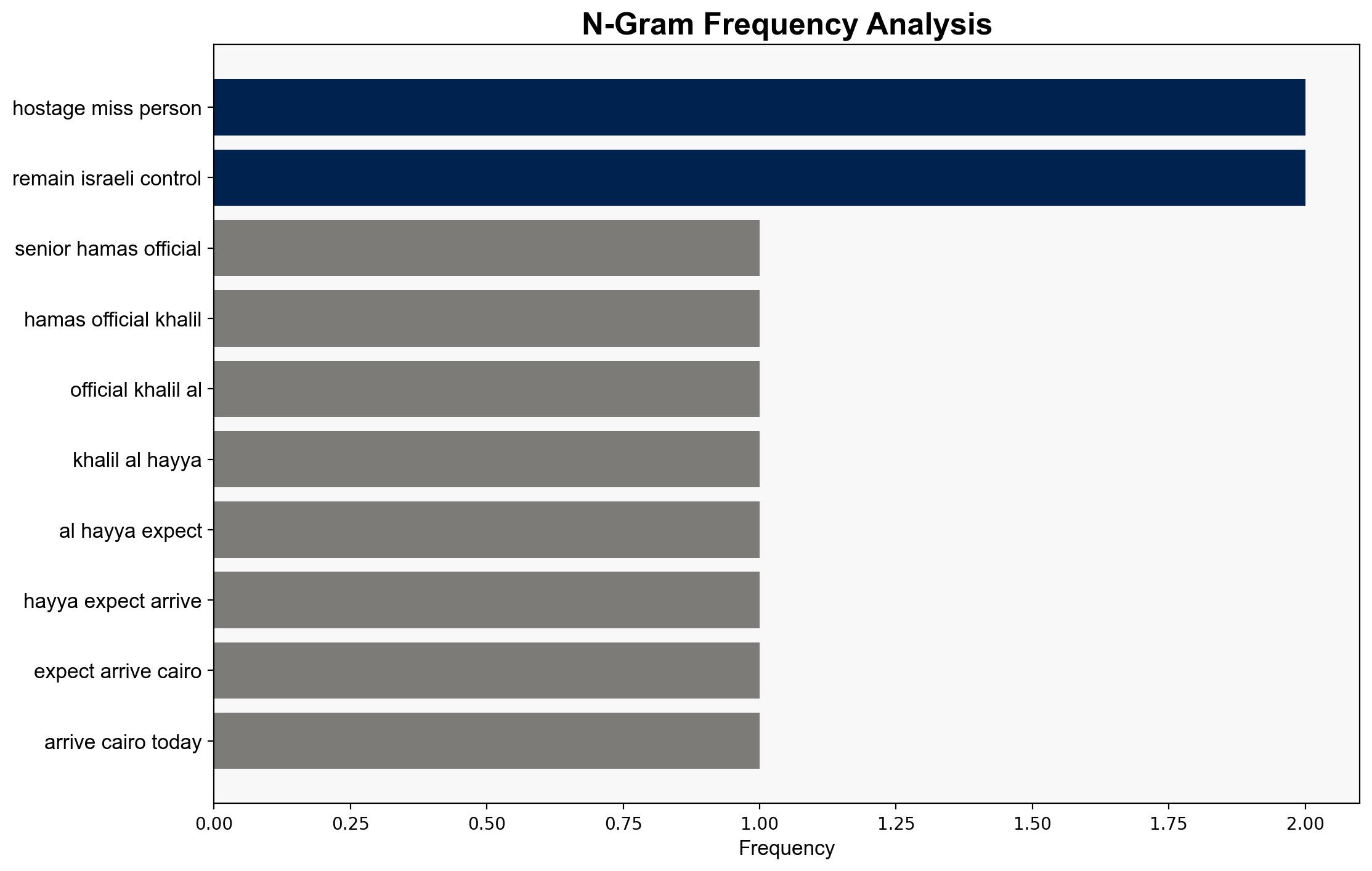Cairo Talks Khalil al-Hayya to lead Hamas negotiation delegation – Israelnationalnews.com
Published on: 2025-10-05
Intelligence Report: Cairo Talks Khalil al-Hayya to lead Hamas negotiation delegation – Israelnationalnews.com
1. BLUF (Bottom Line Up Front)
The most supported hypothesis is that the negotiations in Cairo, led by Khalil al-Hayya, are a genuine attempt by Hamas to reach an agreement with Israel to end hostilities in Gaza, facilitated by a prisoner exchange and partial Israeli withdrawal. Confidence in this assessment is moderate due to the complex and volatile nature of the situation. Recommended action includes maintaining diplomatic pressure and readiness to respond to potential escalations or breakdowns in talks.
2. Competing Hypotheses
Hypothesis 1: The Cairo negotiations are a sincere effort by both Hamas and Israel to reach a sustainable agreement, including a ceasefire and prisoner exchange, driven by mutual interest in de-escalation and international pressure.
Hypothesis 2: The negotiations are a strategic maneuver by Hamas to buy time, regroup, and strengthen its position, with no genuine intent to adhere to a long-term agreement.
Using ACH 2.0, Hypothesis 1 is better supported by the presence of high-level delegations from both sides, the involvement of international actors, and the reported willingness to discuss significant concessions. Hypothesis 2 is less supported but plausible, given Hamas’s historical tactics and the reported assassination attempt on al-Hayya, which could indicate internal dissent or external manipulation.
3. Key Assumptions and Red Flags
– Assumption: Both parties are negotiating in good faith, seeking a resolution.
– Red Flag: The assassination attempt on al-Hayya could signal internal divisions or external interference.
– Inconsistent Data: The timeline for the release of hostages and the specifics of the withdrawal plan remain vague, raising questions about the feasibility and commitment of both parties.
4. Implications and Strategic Risks
– Potential for escalation if talks fail, leading to renewed hostilities.
– Economic impacts on the region if instability persists, affecting trade and international aid.
– Geopolitical risks include shifts in alliances or increased involvement from other regional powers.
– Psychological impact on civilian populations in Gaza and Israel, influencing public opinion and future policy decisions.
5. Recommendations and Outlook
- Encourage transparency and third-party monitoring to ensure compliance with any agreements reached.
- Prepare contingency plans for potential breakdowns in negotiations, including humanitarian aid and evacuation protocols.
- Best Case: Successful negotiations lead to a lasting ceasefire and improved regional stability.
- Worst Case: Talks collapse, leading to intensified conflict and regional destabilization.
- Most Likely: Partial agreements are reached, but underlying tensions remain unresolved, requiring ongoing diplomatic efforts.
6. Key Individuals and Entities
– Khalil al-Hayya
– Ron Dermer
– Gal Hirsch
– Nitzan Alon
– Donald Trump
– Benjamin Netanyahu
7. Thematic Tags
national security threats, counter-terrorism, regional focus




